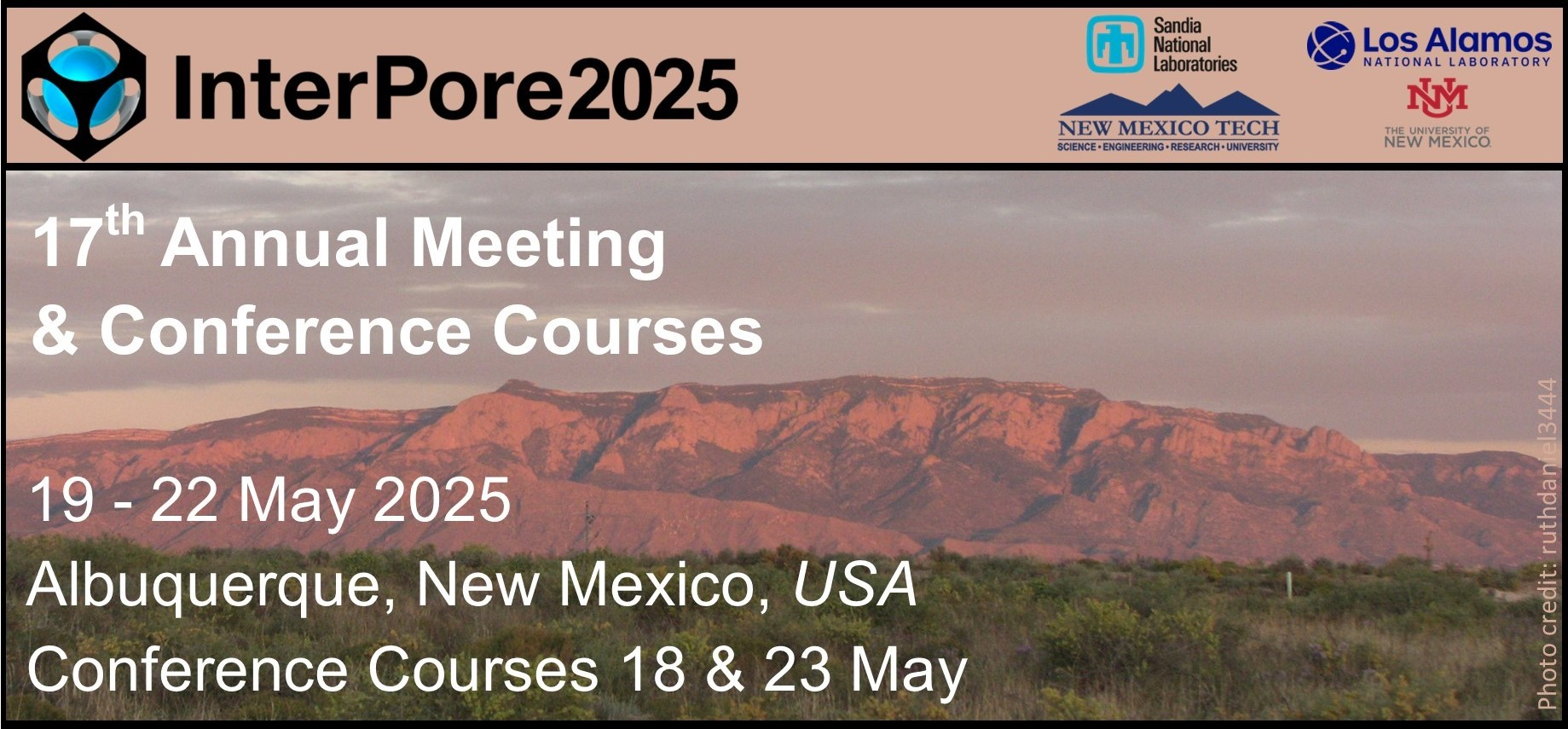Speaker
Description
In a cylindrical capillary or a Hele-Shaw cell with perfectly flat walls, the equilibrium position of the interface between two fluids given the external conditions such as the pressure head is unique. If the external conditions change infinitely slowly (quasistatically), the interface follows this equilibrium, thus, its position is history-independent; there is no energy dissipation in this quasistatic limit. In contrast, in disordered porous and fractured media there are multiple equilibria, leading to history dependence (hysteresis) of the interface evolution even in the quasistatic limit, and Haines jumps of the interface between these equilibria lead to dissipation. An imperfect Hele-Shaw cell (with a gap width randomly varying in space) provides a simple model system in which these phenomena (both in the quasistatic limit and beyond) can be studied, promoting understanding of multiphase flow in a rough fracture as well as providing insights into more complex, 3D porous media. However, even in this simple model the evolution of the interface is nontrivial due to the nonlocality brought about by the resulting fluid flow, which, in principle, requires solving the Stokes equations for the flow in the whole domain even when only the interface evolution is of interest.
We present a novel spectral approach for computing the interface evolution in such a system, based on the Fourier expansion of the interface shape at each time step, confirming its accuracy via comparison to the much more computationally costly numerical solutions of the Stokes equations. We use our approach to study the (microscopic) dynamics of the interface relaxation towards equilibrium, as well as the (macroscopic) pressure-saturation trajectories following drainage/imibibition cycles. We find that even for a single perturbation (“defect”) in an otherwise perfectly uniform cell, interface relaxation dynamics in a Haines jump is a complex, multistage process. Nonetheless, we present a remarkably simple model relying on the concepts of viscous and "dry friction" dissipation, that is able to predict the pressure-saturation cycles in random media. Our findings are a promising step towards an upscaled model of flows in rough fractures, where from the macroscale properties of the roughness one could obtain the averaged interface dynamics.
| Country | United Kingdom |
|---|---|
| Acceptance of the Terms & Conditions | Click here to agree |






